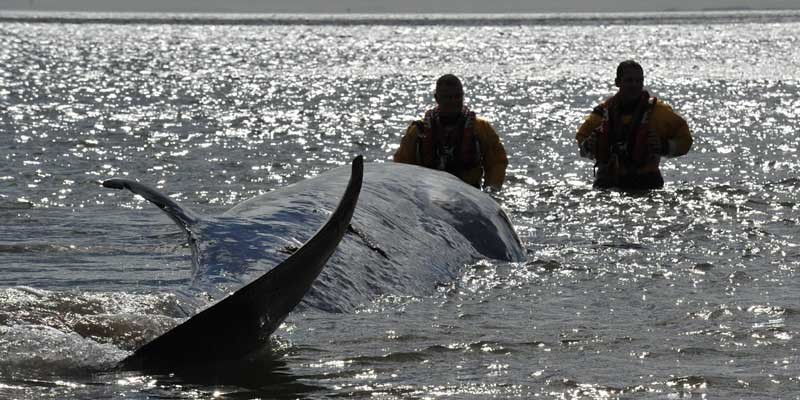The recent whale strandings in Angus and Fife have occurred against a backdrop of wider concern for uncommon visitors to our shores.
It has emerged a marine research unit from St Andrews University is involved in tracking the movements of whales and other cetaceans with non-invasive methods.
Dr Luke Rendell confirmed a research vessel has laid down buoys at three points, from Stonehaven in the north down to the Angus coast, then St Andrews itself.
The researcher, from the university’s sea mammal research unit, said the project is a ”first” but is in the early stages of a complex and complete survey of cetacean movements.
”We are currently deploying three (buoys) between St Andrews and Stonehaven to listen for marine mammals (and other noises) as part of an observatory project,” he said.
A barge has spent the last week deploying PAM (passive acoustic monitoring) buoys, which might give some indication as to the reasons behind the sei whale stranding on the shore of Elliot by Arbroath, or the mass stranding of pilot whales on a Fife beach at the end of last month.
Dr Rendell, a lecturer for the Marine Alliance for Science and Technology Scotland, added: ”It isn’t common, this is a first. (The project) will include a web portal where anyone can log on a look at what has been heard.”
It is understood the website detailing the survey’s findings will go live within the next couple of weeks.
GS Marine has undertaken work to place the hydrophones, the Stonehaven installation of which is 1 miles from the shore.
Representatives of the firm said similar units were to be placed by Arbroath and St Andrews to detect whales, dolphins and porpoises.
Hydrophones are passive methods of detection designed to record underwater sound. Microphones are attached to a surface buoy by a length of data cable.
Software has been developed to match acoustic signatures to different kinds of marine life, allowing researchers to detect the slower moving whales.
Scientists are alerted to the presence of a whale by a remote call from the buoy.
Last month saw a surge in the visit of white-beaked dolphins off St Cyrus and humpback whales were reported off the Stonehaven coast last year an almost unknown occurrence.
Scottish coastal waters occasionally see whales chasing mackerel between May to October, as shoals migrate to the North Atlantic.
As part of its 600th anniversary campaign, St Andrews University is fundraising for a £12 million centre for earth, life and the oceans, which will allow vital fieldwork and help to progress understanding of life underwater.
